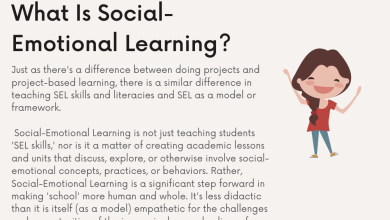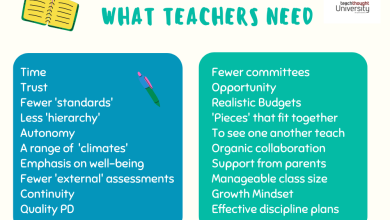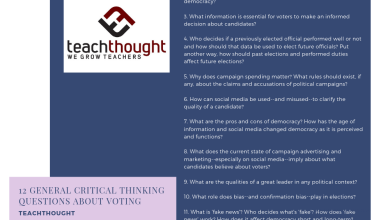Help Students Read More Over The Summer
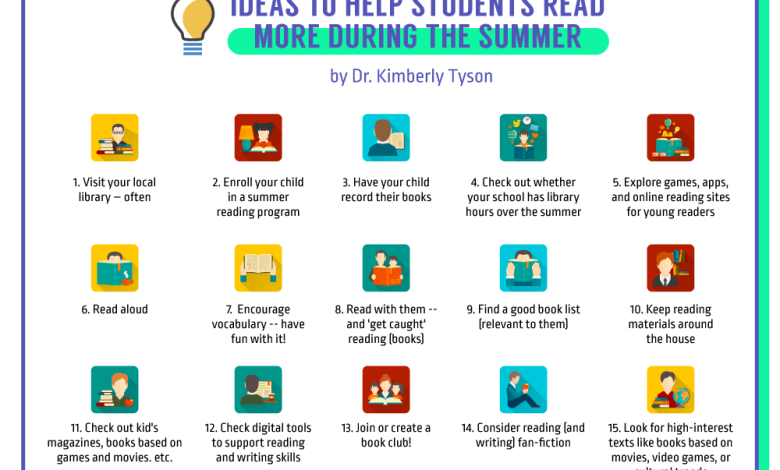
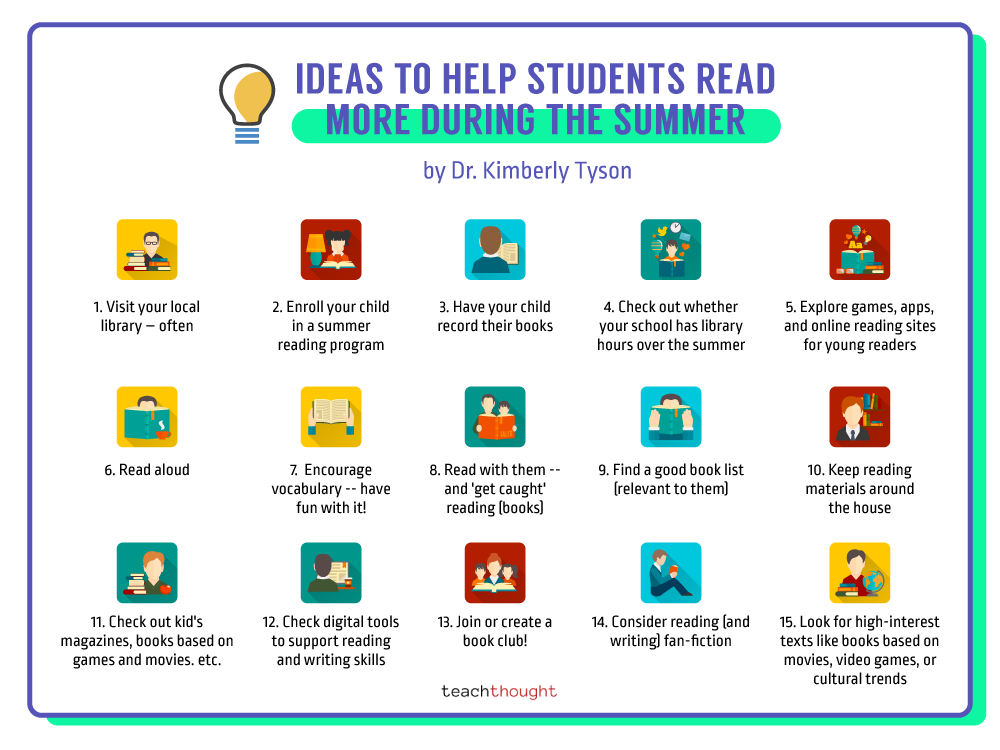
contributed by Dr. Kimberly Tyson
Summer is here. Your child probably has a countdown posted on the refrigerator or hidden in their notebook.
During the past school year, your child’s school has supported and encouraged independent reading to build your child’s fluency, vocabulary, and enjoyment of reading. And you’ve likely done the same thing at home. Summer is the perfect time to think about how to support your child’s independent reading through the hot weeks ahead.
In this post, I’ll some ideas for how parents can support and encourage reading during summer vacation (and stop the summer reading slide).
Is Summer Reading Loss Real?
While it obviously doesn’t occur for every child, summer reading loss is real. Did you know that the best predictor of summer loss or summer gain is whether or not a child reads during the summer? And the best predictor of whether a child reads is whether or not he or she owns books. Further, summer reading loss or ‘summer setback’ is a bigger problem for children from low-income families.
If your child doesn’t read over the summer, they will likely lose skills but, more importantly, are missing out on the significant role reading can play in personal growth–especially for developing children and teens. Children need to read outside of school. Research clearly shows that the key to fighting summer reading loss is finding novel ways to get books into the hands of children and adolescents during the summer break.
Yes, summer reading loss is real. The good news is that you can prevent summer reading loss. I’ll provide some key things to think about and suggestions for how to motivate and encourage your child to read.
The Role Of Motivation In Reading
First, know that motivation matters. Children don’t just need books…they need the right books. Providing children with books that fit — books that match their skill levels and their interests — is an important first step in encouraging voluntary reading. If you don’t already know, find out what types of books – genres, authors, themes, books in a series – your child likes to read.
Studies suggest that children who read as few as six books over the summer maintain the level of reading skills they achieved during the preceding school year. Reading more books leads to even greater success. When children are provided with 10 to 20 self-selected children’s books at the end of the regular school year, as many as 50 percent not only maintain their skills but actually make reading gains.
12 Resources & 13 Ideas To Slow Summer Reading Loss
1. Visit your local library – often
Your local library can often serve as the best resource to keep your child reading over the summer. If you don’t have a library card – they’re easy to get (just provide proof that you live in the town or city). And have your child sign up for a library card, too. And don’t be shy about asking for help. A librarian will help guide you and your child to find just the right books to fill his backpack and keep him/her reading.
2. Enroll your child in a summer reading program
Many libraries support reading by offering a summer reading program for students of all ages. Sometimes there are incentives to keep them reading all summer long. Register your child – it’s free.
In Indianapolis, where I live, I just saw a poster featuring Marion County’s summer reading program in the bank! How cool is that? Check out their colorful poster.
3. Have your child record their books
If your child is young, some kind of ‘tracker’ or documentation of progress can be motivating. Not only will it help to track his progress, the tracker sheet can provide a source for conversation. For example, perhaps you notice that your child primarily chooses fiction selections. Talk about this, and the next time you visit the library, encourage him to take a look at several nonfiction books.
4. Check out whether your school has library hours over the summer
More and more schools are supporting summer reading by keeping their library open throughout the summer. Though the hours are reduced, it still provides an opportunity to stay connected to school and to keep your child reading.
5. Explore games, apps, and online reading sites for young readers
In addition to apps like Epic and newsela, check out my two favorite online reading sites for young readers.
- StorylineOnline is a free site featuring actors who creatively read books aloud. Actors of all ages engage children by telling them why they like to read or chose a specific book to share. This high-quality website features well-known and contemporary picture books that include professional voice narration and original background music to accompany the read-aloud.
- One More Story, my personal favorite, is a site that features a virtual bookshelf, high-quality oral reading, and the ability to read books independently with support. Along with lots of reading side by side, One More Story helped support my son when he was learning to read. First, he would select a book and listen it being read until he felt comfortable reading independently. He’d practice several times orally. Next, we would read the book together. Finally, he would read it aloud to me. To wrap up each book, we’d take a trip to our public library and check out the book.
6. Read aloud
Children of all ages love read-alouds.
Read-alouds build fluency, vocabulary, and comprehension. Choose a book to read aloud together. For younger children, picture books and short chapter books are a great choice. For older students, longer selections are suitable as well. I recently read The Fault in Our Stars by John Green (recently named the #1 book by the New York Times) with my teenagers. Read-alouds, even with older children, are a great way to build relationships and encourage conversation. One final note – try not to get stuck in one genre. Explore a little!
7. Encourage vocabulary–have fun with it!
A broad vocabulary is important for effective speaking, listening, reading, and writing. In addition, vocabulary influences fluency, comprehension, and student achievement. If your child is young, you’ll want to build vocabulary orally through everyday activities. Talk, talk, and talk some more. You can also write those words so that your child continues to make the connection between listening, speaking, writing, and reading.
Today, there are many online tools that support vocabulary and word learning. Online tools, compared to the more traditional methods of word learning, provide a broader array of information about words and word meanings. And they’re fun!
8. Read with them–and ‘get caught’ reading (books)
It’s hard to encourage your children to read if you’re not reading yourself. My summer reading stack is already about 10 books deep. If you’re looking for suggestions, there are lots of lists. Here are a few to get you started:
9. Check out a few book lists for students
Sometimes students get stuck and don’t know what to read. Here are a few ideas to get unstuck. First, your child’s school may have lists of books that they suggest students read. In addition, there are many reputable websites that provide lists of ‘must-read’ books. And the librarian at your local library will likely be helpful; they know what books are frequently checked out by kids. Listed below are a few lists to get your child started.
- The Big Summer Reading List – book recommendations with a downloadable list that you can take to the library.
- Barnes & Noble Summer Reading Program – B & N has a summer reading program that provides incentives for your child to earn a free book. The site features book selections sorted by grade level, which is always helpful.
- American Library Association (ALA) Notable List – The ALA, the gold standard in literature, provides numerous lists of exceptional children’s books.
10. Keep reading materials around the house
I think that a well-lived in house includes books, magazines, newspapers, and reading materials in every room of the house. Even with the rise of ‘screen reading,’ stock your home with physical texts like these and more–brochures, local newspapers and pamphlets, and other reading materials. If your child is young, read them with him/her. Talk about text features such as bold-faced headings, captions, call-out boxes, and more.
11. Check out kid’s magazines
Summer is the perfect time to try out a magazine subscription, purchase a single magazine at a local bookstore, or check several out at the library. My kids loved National Geographic Kids and American Girl Magazine when they were young. In addition to these, your library will also have other magazines such as Click, Appleseeds, Hopscotch for Girls, Boys Life, and J-14 magazine. Perfect for shorter reads.
12. Check digital tools to support reading and writing skills
Another way to keep your child reading and writing over the summer is to harness the power of digital tools. Today, there are many free apps and online tools that support reading and writing. I’ve reviewed many of these, and you can check them out with your child to see which suits his/her needs and interests best.
13. Join or create a book club
Your child could join a local book club at the library or form one himself. How about inviting a few friends over once a week to discuss a book and share or ‘book talk’ books they’re reading. Make the group big enough so that even if a few kids are on vacation, there are still kids around to meet.
And, if you’re stuck for reasons why your family should read, Why Students Should Read might help contextualize it all. Talk about reading with your child. Personalize the list by adding more reasons why you and your family reads.
Other Ideas
Look for high-interest texts like books based on movies, video games, or cultural trends
Make it a contest
Consider reading (and writing) fan fiction
Here’s to summer reading. Fill up your glass with lemonade, sit awhile and read, and enjoy!
25 Resources And Ideas To Help Students Read More During The Summer by Dr. Kimberly Tyson was first published on learningunlimitedllc; image attribution flickr user stijlfoto
